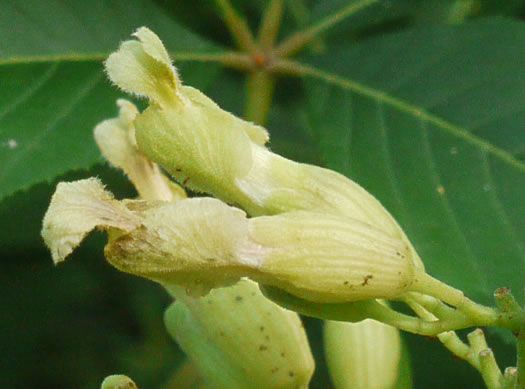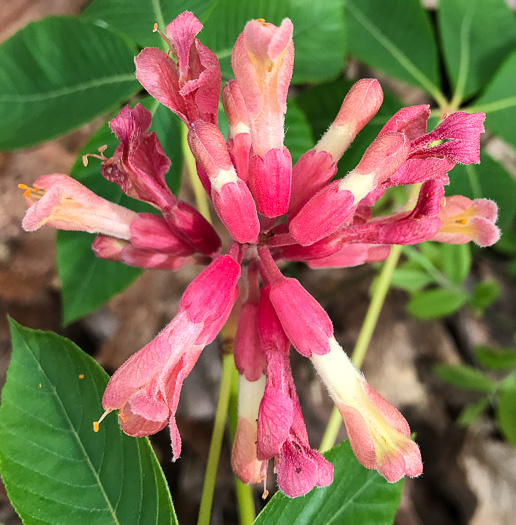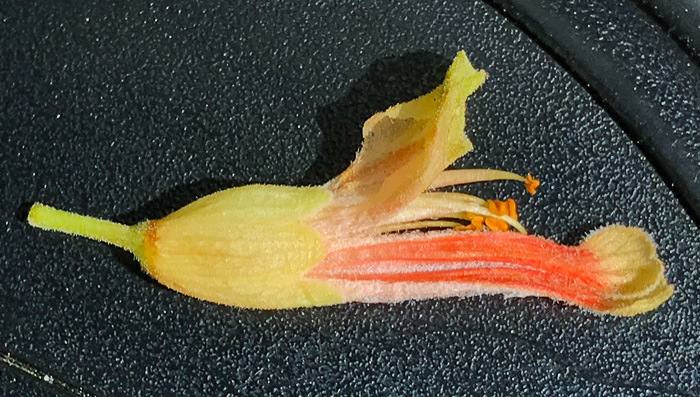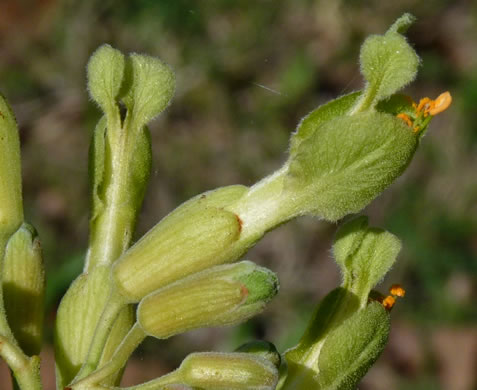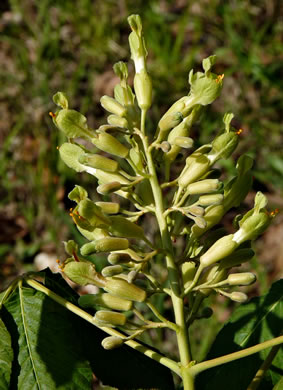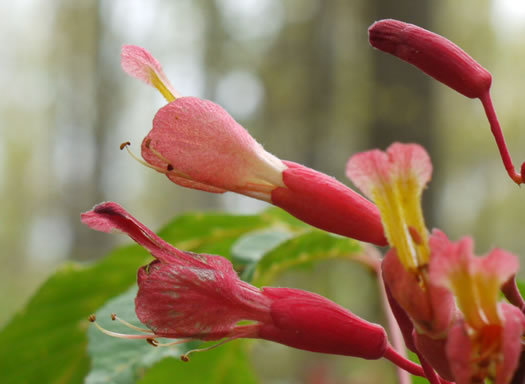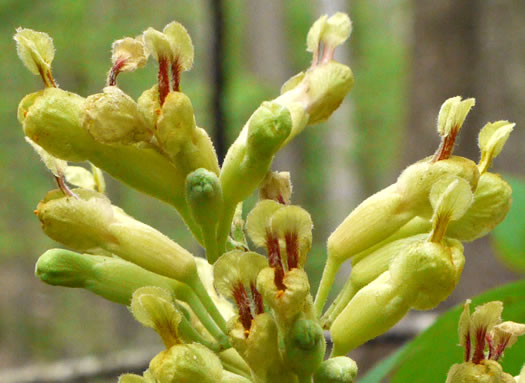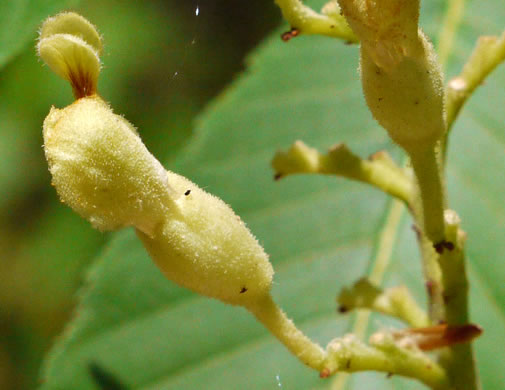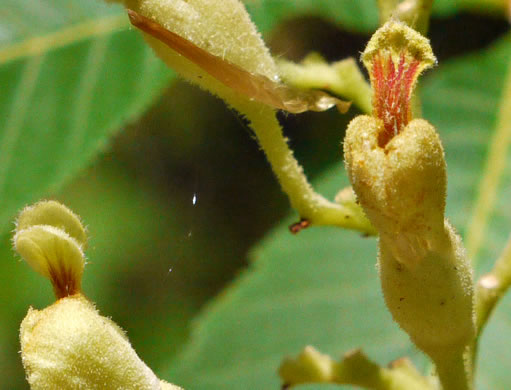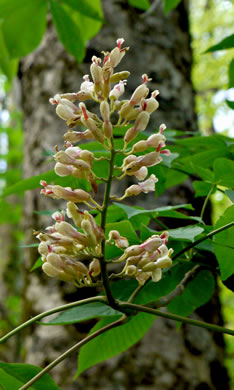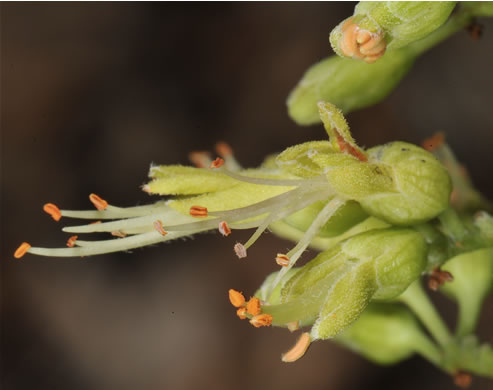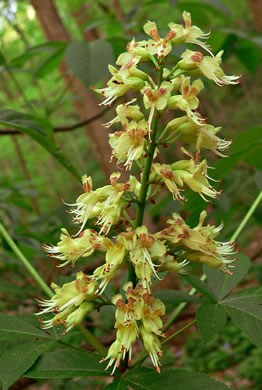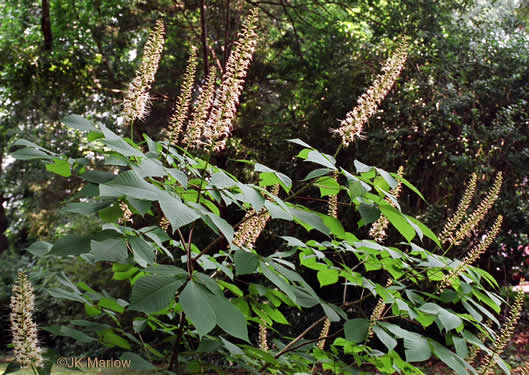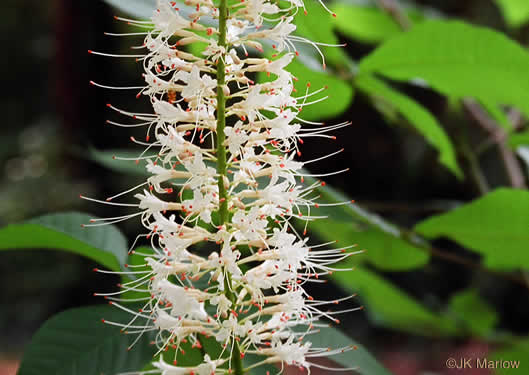Your search found 15 image(s) of flowers of Buckeye species.
To see larger pictures, click or hover over the thumbnails.
To go to the plant's detail page, click its name.
 Habitat: In the Piedmont in mesic, nutrient-rich forests, on bottomlands, lower slopes, and in ravines, in the Coastal Plain primarily on floodplains of brownwater (alluvium-carrying) rivers (most notably the Roanoke River in NC), in the Mountains only at low elevations
Habitat: In the Piedmont in mesic, nutrient-rich forests, on bottomlands, lower slopes, and in ravines, in the Coastal Plain primarily on floodplains of brownwater (alluvium-carrying) rivers (most notably the Roanoke River in NC), in the Mountains only at low elevations
Stamens are shorter than lateral petals, & the calyx & pedicel lack glands, per Native Trees of the Southeast, An Identification Guide (Kirkman, Brown, & Leopold, 2007).
Known to hybridize with A. pavia, resulting in plants with reddish flowers, per Native Trees of the Southeast, An Identification Guide (Kirkman, Brown, & Leopold, 2007).
Recognized by unequal yellow-green to cream flower petals, per Trees of the Southeastern United States (Duncan & Duncan, 1988).
 Habitat: Coastal Plain marl forests (wet, calcareous flats), hardwood bluffs, rich floodplains of brownwater and blackwater rivers, basic-mesic forests, shell hammocks and shell middens, calcium-rich sandy soils in maritime forests
Habitat: Coastal Plain marl forests (wet, calcareous flats), hardwood bluffs, rich floodplains of brownwater and blackwater rivers, basic-mesic forests, shell hammocks and shell middens, calcium-rich sandy soils in maritime forests
Glandular-hairy tubular calyx. Usually 7 unequal, slightly exserted stamens, per Native Trees of the Southeast, An Identification Guide (Kirkman, Brown, & Leopold, 2007).
 Habitat: Moist forests, up to nearly 2000 m, especially prominent in seepy cove forests, in the Piedmont only in ‘montane’ habitats
Habitat: Moist forests, up to nearly 2000 m, especially prominent in seepy cove forests, in the Piedmont only in ‘montane’ habitats
Corolla tubular with 4 very unequal petals; stamens shorter than petals, per Native Trees of the Southeast, An Identification Guide (Kirkman, Brown, & Leopold, 2007).
Calyx tomentose, glandular hairy, per Native Trees of the Southeast, An Identification Guide (Kirkman, Brown, & Leopold, 2007).
Upper petals often streaked with red, per Native Trees of the Southeast, An Identification Guide (Kirkman, Brown, & Leopold, 2007).
 Habitat: Mesic upland and riparian forests, bluffs, ravines, stream banks; usually over calcareous substrates
Habitat: Mesic upland and riparian forests, bluffs, ravines, stream banks; usually over calcareous substrates
Petals only slightly unequal in size, and stamens about 2x as long as petals, per Weakley's Flora.
Broad pyramidal clusters of pale yellow to greenish-yellow flowers, per Trees of the Southeastern United States (Duncan & Duncan, 1988).
 Habitat: Mesic forests on bluffs and in ravines (the SC occurrence is on Fall Line river bluffs, with shaley, subcalcareous soils)
Habitat: Mesic forests on bluffs and in ravines (the SC occurrence is on Fall Line river bluffs, with shaley, subcalcareous soils)
Recognized by columnar, white flower clusters, per Trees of the Southeastern United States (Duncan & Duncan, 1988).
Stamens exserted, 3-4x the length of the petals, per Native Trees of the Southeast, An Identification Guide (Kirkman, Brown, & Leopold, 2007).

